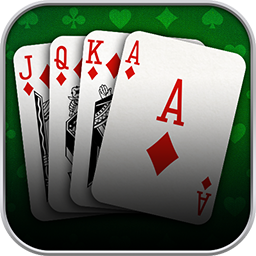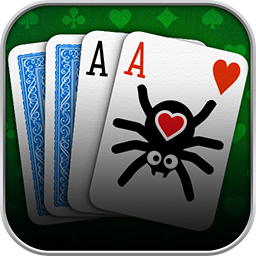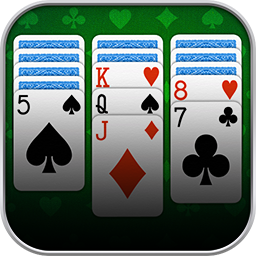You have already learned about some of the most important strategies for Gin Rummy, as well as the basics of offensive and defensive Gin Rummy strategies. Now you’re ready to delve deeper into promising card combinations and later use that knowledge for beginning your Gin Rummy round smartly.
We’ll take a little more time here and look at plenty of examples. Let’s get started!
Gin Rummy: Melds vs. Combinations
First of all: Combinations are not the same as melds! Instead, it works in the same way as squares and rectangles.
Melds in Gin Rummy are card combinations that fulfill certain criteria and, therefore, no longer count towards your deadwood. In Gin Rummy, valid melds are groups and sequences. You can find more details on melds in our Gin Rummy rules.
In addition to melds, the combinations in this lesson also include combinations consisting of several cards that are not yet melds but have the potential to become one or more melds.
Pro Tips for Collecting Cards in Gin Rummy
As we are getting into the Gin Rummy pro tips, we will use terminology specific to combinations in Gin Rummy and also explain it.
Third Spread or Knock Cache
Both terms refer to the same thing: a Gin Rummy tactic of knocking with two melds and some deadwood.
You collect cards for this knock cache or third spread until it is ideally well below 10 points without aiming for these cards to match in any regard. As long as they are Aces, Twos, and maybe Threes, it’s all good. It’s mainly a matter of collecting cards of the lowest possible value alongside your melds so that you can knock as soon as possible without worrying about an undercut.

Since you logically won’t reach a gin with a cache, this ploy is more of a defensive Gin Rummy strategy. Playing for a knock cache is ideal, for example, if you are only a few points short of winning a table of Gin Rummy and don’t need to rely on a gin and the bonus points that come with it.
Useful Combinations in Gin Rummy
We will now introduce you to several types of card combinations that are useful for forming melds in Gin Rummy. This way, you will be able to recognize good opportunities the next time you sort your hand cards, even if a meld does not appear immediately. This overview may also help you make clever discard decisions by distinguishing hand cards that are actually useless from those with potential.
Let’s start small and work our way up to the combinations with the most direct lay-off options.
Two-Card Combinations in Gin Rummy
Identifying two cards that match is easiest. So let’s start here.
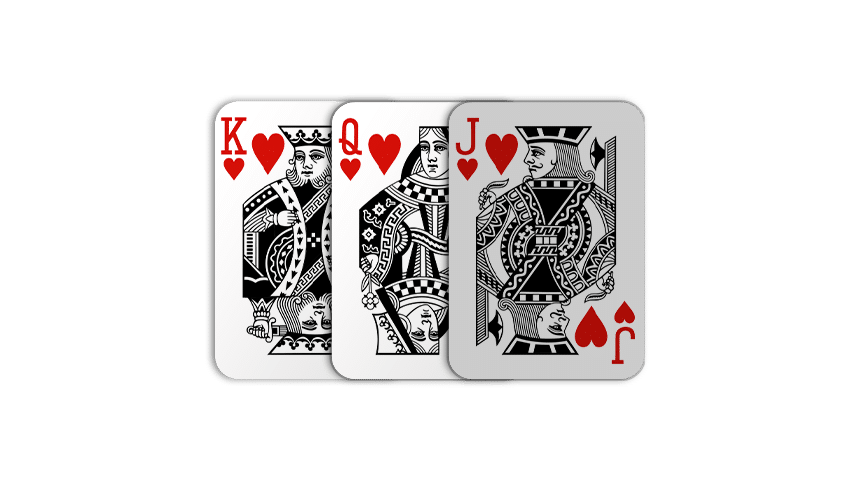

Each of these example combinations is just one more card away from a melded sequence. Therefore, they have potential.
However, exactly one card in the entire game fits each combination: The Jack of Hearts and the Seven of Spades. If you get it, you will, of course, have room to add another matching card.
You can keep such a combination for about the first five turns of a round. But if there is no addition or extension to this combination after that, it is time to discard these cards, especially if they are of high value, such as the King and Queen.
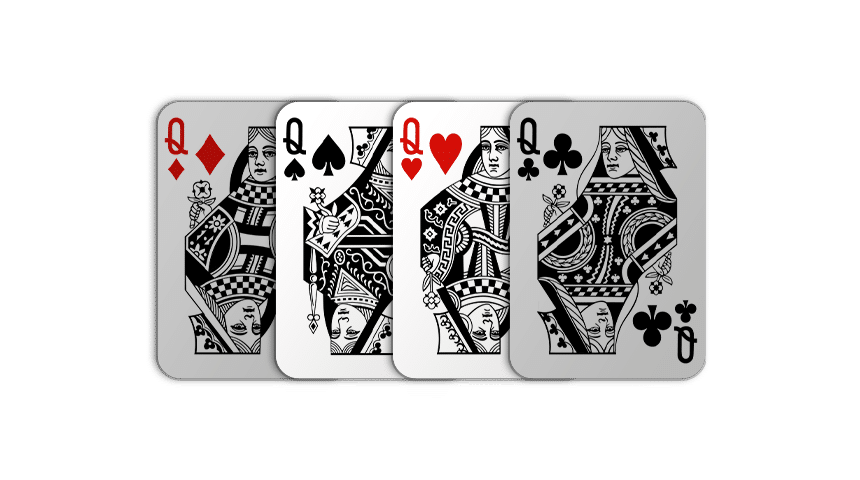
Initially, more is possible here: This non-melded pair of Queens could become a melded group of Queens with just one more card, too. Even better, you don’t need one specific card. Instead, two cards qualify: the Queen of Clubs and the Queen of Diamonds.
However, these two additional cards already exhaust the potential for melding cards, as there is room for a maximum of four cards in a group.
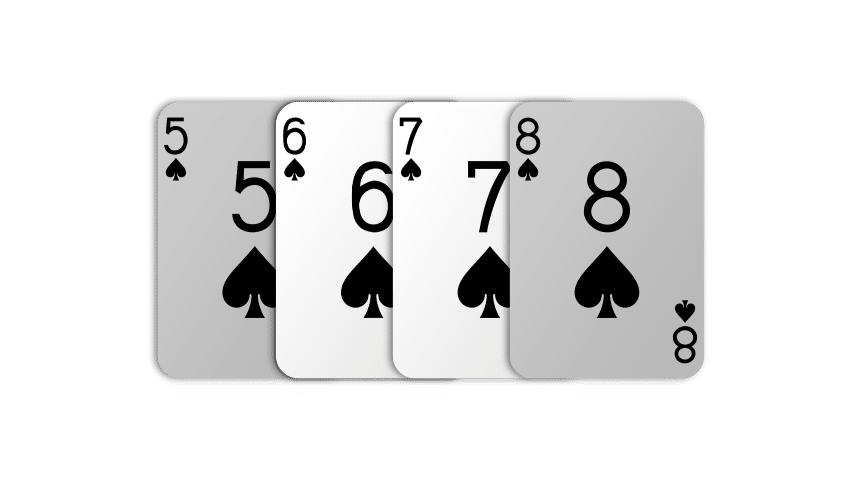
The most promising type of two-card combination in Gin Rummy is shown here: two consecutive cards of the same suit. We already saw this at the beginning of this section, but this version is even better: It’s neither at the end nor the beginning of the spectrum of sequences, meaning it doesn’t start with a King or an Ace.
As a result, you don’t depend on drawing a specific card in the first step. Instead, two cards come into question again, in this case the Five of Spades and the Eight of Spades.
If you are lucky enough to get both in succession, you can theoretically even continue the spades sequence Five-Six-Seven-Eight at both ends. That’s worthwhile!
Multi-Card Combinations in Gin Rummy
Your melding chances expand even further if one combination serves as the basis for several melds.
The Triangle
If your foundation for multiple melds consists of three cards, this is often called a triangle among Gin Rummy professionals. Although you may not have looked at it that way before, you have probably already encountered one or two triangles in your hand.
A triangle is characterized by the fact that two of the cards have the same rank, i.e., are a pair, and the third card has the same suit and the next or second closest rank to one of the two pair cards.
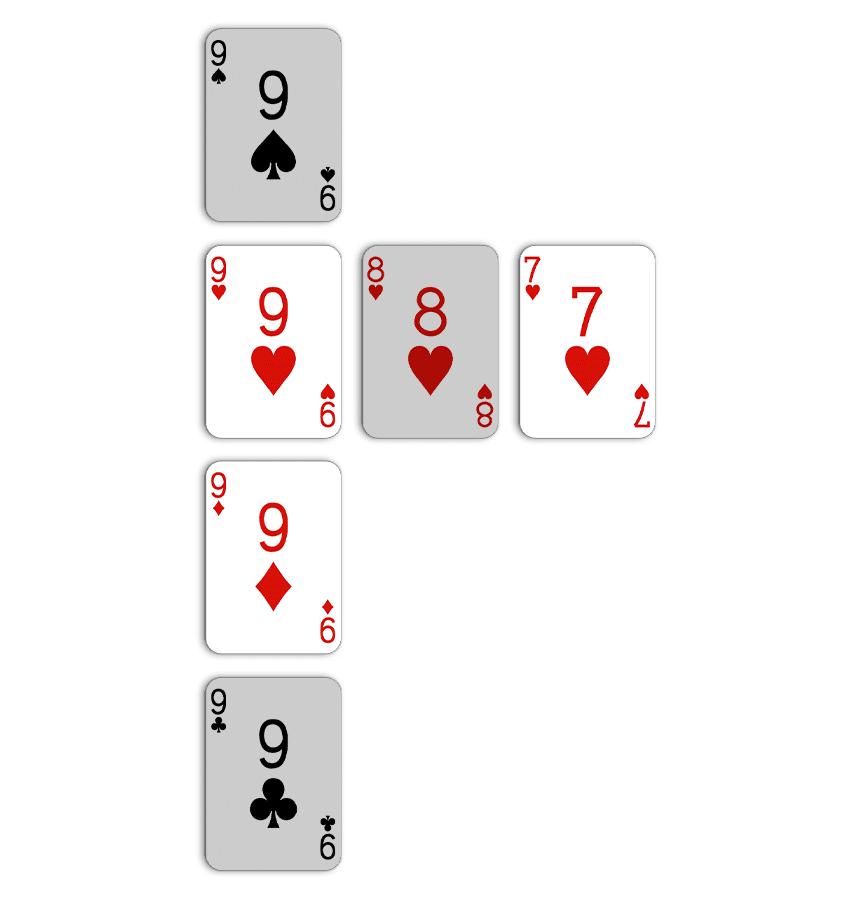
Let’s first examine a sample combination of a pair and the second closest card to a pair card.
Three different cards in the game could be the key to the next meld:
- Nine of Spades or Nine of Clubs for a group
- Eight of Hearts for a sequence

Things look even better if you have a pair and the adjacent card to one of the pair cards.
Indeed, four different cards in the game can complete the next meld:
- Jack of Diamonds or Jack of Hearts for a group
- Queen of Spades or Nine of Spades for a sequence
Four Cards
This is more or less an extended triangle: There are two pairs with neighboring ranks and partially or completely matching suits.
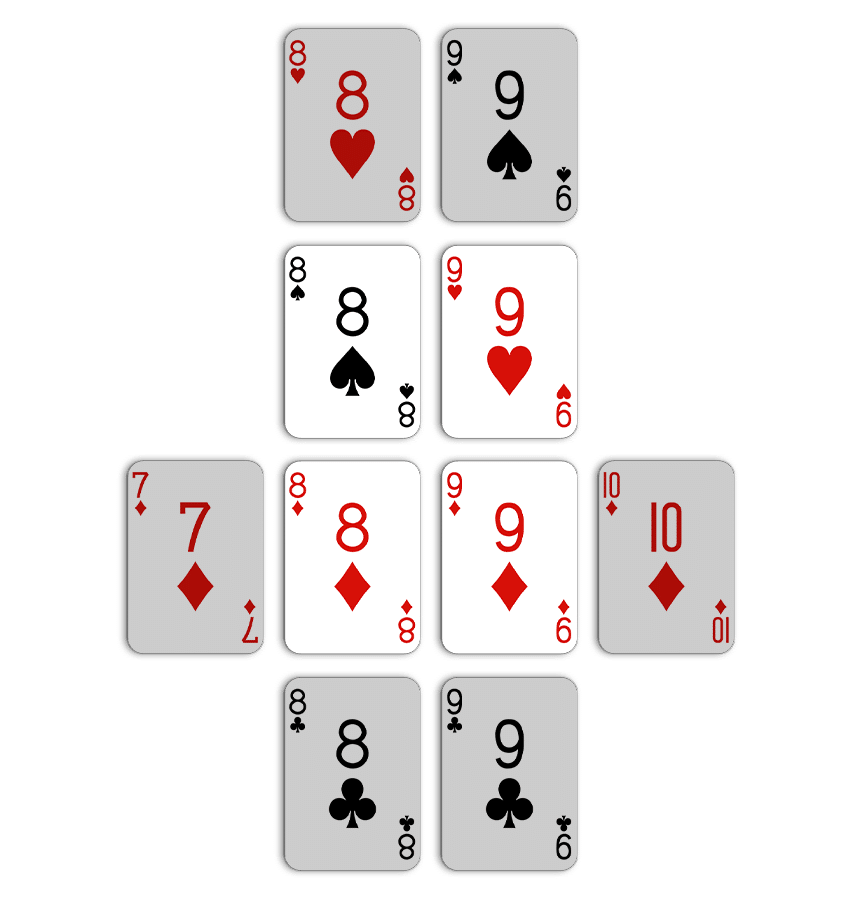
Six different cards could be added to make a meld of this example combination of two pairs and one overlapping suit:
- Eight of Hearts or Eight of Clubs for a group of Eights
- Nine of Spades or Nine of Clubs for a group of Nines
- Seven of Diamonds or Ten of Diamonds for a sequence of Diamonds

If, as in this example, the same suits appear in both pairs, you even have eight options for completing a meld:
- Eight of Spades or Eight of Clubs for a group of Eights
- Nine of Spades or Nine of Clubs for a group of Nines
- Seven of Hearts or Ten of Hearts for a sequence of Hearts
- Seven of Diamonds or Ten of Diamonds for a sequence of Diamonds
Going further with this example: If you draw the Nine of Spades, keeping the Eights in your hand is still better than another stand-alone pair, say two Queens. If you draw an Eight in the next few turns, you have two groups. Or sequences may arise after all.
Additional Gin Rummy Tips
Now that you can identify useful card combinations in your hand, we’ll sprinkle in two more general tips for collecting cards in Gin Rummy, which also tie in with our Gin Rummy Strategies.
Don’t Block the Hand
If you want to achieve a gin, betting on two groups of four cards can be problematic. With ten cards in your hand, there would only be two left, which you couldn’t meld so easily. After all, a meld in Gin Rummy must consist of at least three cards.
So, try to keep the option of an additional sequence available from the start rather than just filling up the two groups.
Once you have two full groups and no more great prospects of sequences due to the course of the game, you could deliberately forgo a gin and instead build up as small a knock cache as possible to knock shortly.
Stay Realistic
A realistic guideline that can lead you to a gin is fitting your ten cards into three melds, with three, three, and four cards.
Expecting more than five cards per meld would be less realistic, even if sequences could theoretically accommodate this. Unless your starting hand already gives you four or more cards in a sequence, don’t count on it.
Keep Track
We’ve said it before, and we’ll say it again, because it’s important: Remember which cards are no longer in play or with your opponent. The nicest four-card combination loses its value if the cards you need to complete a meld are out of reach in the discard pile or your opponent’s hand.
Now, you can examine your hand cards more closely in your next rounds of online Gin Rummy. We wish you lots of fun and a good hand!
If your appetite for knowledge isn’t satiated yet, check the Gin Rummy Lessons for more information, or feel free to revisit the Gin Rummy rules.


